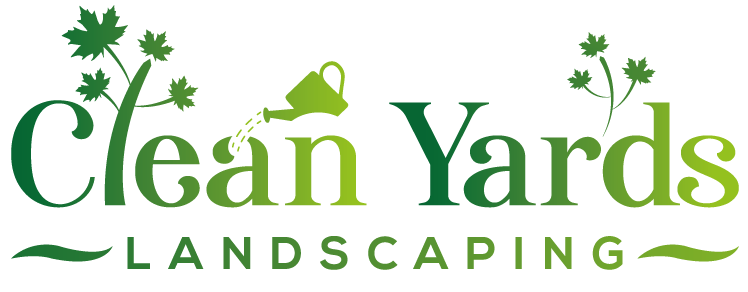Embrun Guide: Specialized Pruning for Healthy Winter Shrubs
Before diving into winter shrub care, are your garden beds ready for the season? Ensuring proper preparation now leads to a healthier landscape next year. Request Your Free Embrun Pruning Quote Today!
Quick Guide to Winter Shrub Pruning
- Prune after dormancy starts (late fall) but before deep freeze.
- Focus on removing Dead, Damaged, Diseased wood (3 D's).
- Use thinning cuts for structure; avoid heavy 'heading back'.
- Be cautious with spring bloomers (e.g., Lilacs) – don't cut off next year's flowers!
- Protect sensitive shrubs with mulch and burlap wraps if needed.
- Sharp, clean tools make healthier cuts.
Introduction: Winter is Coming (to Your Embrun Shrubs!)
Alright neighbours, let's face it – here in Embrun, we know winter isn't just a suggestion, it's a full-blown season that demands respect! And while we're busy finding our warmest boots, our garden shrubs are bracing themselves for the onslaught of snow and ice that the Ottawa region famously delivers. From Russell right over to Greely, our local climate can be particularly tough on our landscaping projects.
Ever wonder why some shrubs look fantastic come spring while others look... well, a bit sad and broken? Often, the difference lies in proper winter preparation. Heavy snow load and freezing rain can easily snap branches, stress the plant, and leave it vulnerable.
That’s where strategic pruning before the deep freeze sets in can be a game-changer. Think of it as essential gardening homework! Taking the time now to trim away weak, dead, or awkwardly placed branches helps your shrubs handle the weight of winter better, reducing damage and setting them up for healthy growth next year. It’s like giving them a sturdy winter coat instead of sending them out in a t-shirt! Let's dive into how to give your Embrun shrubs the best chance to shine next spring.
Why Bother? The Crucial Role of Winter Pruning in the Ottawa Valley
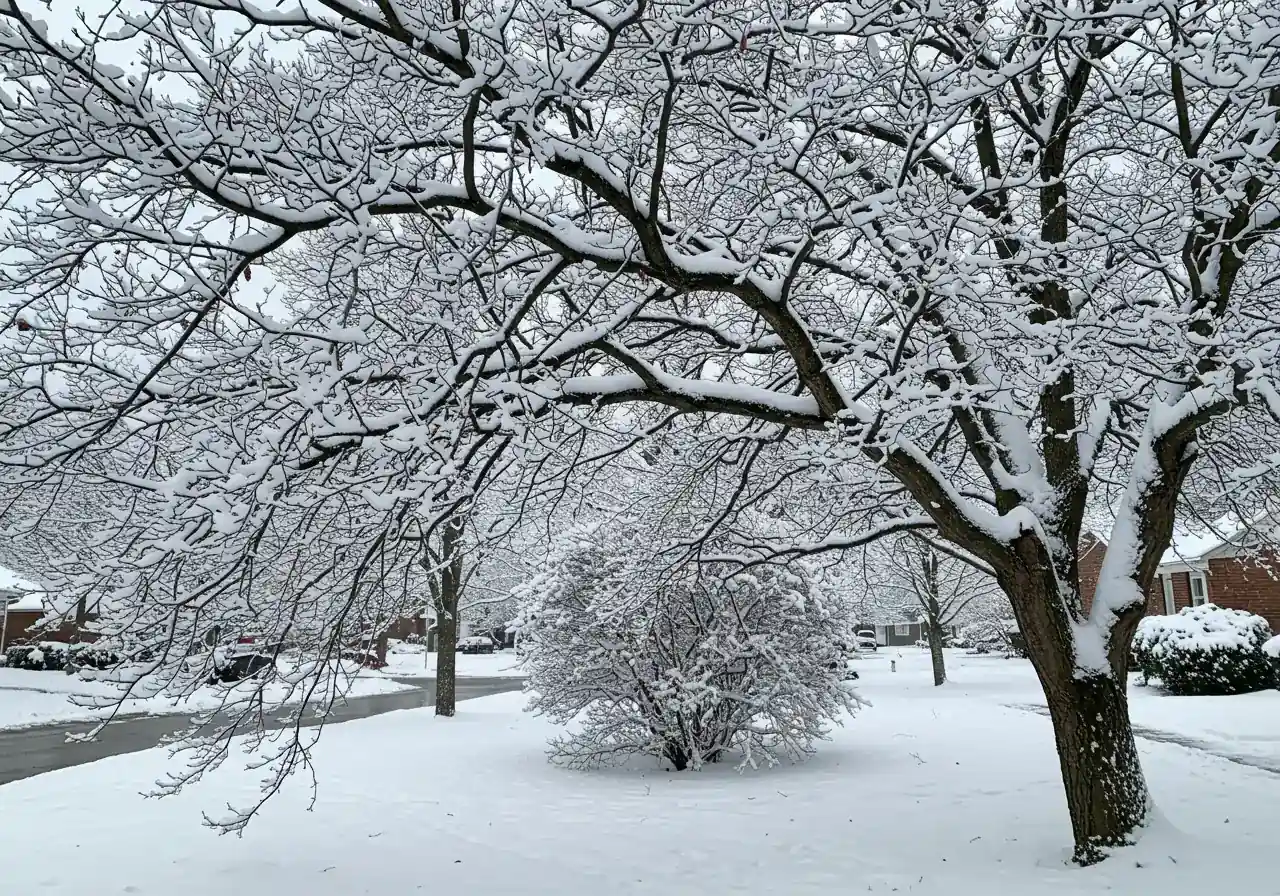
Okay, let's be honest. The idea of heading out into the chilly Ottawa air to trim your shrubs when you could be cozy inside might sound... less than appealing. Why bother freezing your fingers off for gardening chores in late fall or winter? Well, as it turns out, this timing is actually brilliant for keeping your shrubs happy and healthy, especially given the wild winter weather we experience from Barrhaven to Greely.
Here’s the scoop on why winter pruning is more than just busywork:
- Preventing Snow and Ice Calamities: Remember those epic ice storms or days with heavy, wet snow? They can wreak havoc on shrubs, snapping branches like twigs. Winter pruning helps by removing weak, dead, or awkwardly angled branches before they become casualties. Think of it as improving your shrub's structural integrity – making it less likely to break under pressure. A well-pruned shrub has a better chance of shrugging off that heavy dump of snow we often get. You can check local resources like the City of Ottawa's tree care advice for more on weather impacts.
- Boosting Plant Health: Snipping away dead or diseased wood does wonders. It stops potential problems from spreading and allows the plant to direct its precious energy towards healthy growth come springtime. It's a fundamental part of plant care, much like ensuring [good soil health is vital, often improved through lawn aeration](https://cleanyards.ca/blog/embrun-lawn-aeration-importance-soil-health/). A clean-up now means a healthier shrub later.
- Getting a Clear View: Without all those leaves in the way, you can actually see the shrub's structure! This "bare bones" view makes it much easier to spot problem branches, crossing limbs, or areas that need thinning for better shape and airflow. Improving airflow is key to reducing fungal diseases when things get damp again. Getting the structure right sets the stage for success, similar to the careful planning outlined in the [spring garden install guide for challenging local soils](https://cleanyards.ca/blog/embrun-homeowners-spring-garden-install-guide-for-clay/).
- Easier Work (Sort Of!): While it might be cold, seeing the branch structure clearly can make the pruning decisions easier. And tackling garden chores is always better when you're comfortable; using the right equipment, like [ergonomic garden tools to prevent strain](https://cleanyards.ca/blog/embrun-ergonomic-garden-tools-fall-strain-prevention/), makes a big difference any time of year.
- Setting Up Spring Success: Proper dormant pruning actually encourages vigorous new growth when spring finally arrives. For many flowering shrubs (those that bloom on new wood), it can even mean more flowers! It’s all part of creating a thriving landscape, just like how [overseeding helps achieve thicker grass come spring](https://cleanyards.ca/blog/embrun-overseeding-lawn-thicker-grass/).
So, while it might require an extra layer of clothing, winter pruning is a crucial investment in the health and beauty of your Ottawa Valley landscaping. If tackling the pruning yourself feels a bit daunting, remember there are professional [landscaping and yard maintenance services](https://cleanyards.ca/services/) available to help keep your shrubs in tip-top shape through winter and beyond.
Get Professional Help With Your Shrub PruningThe Gardener's Calendar: Pinpointing the Perfect Pruning Time in Embrun
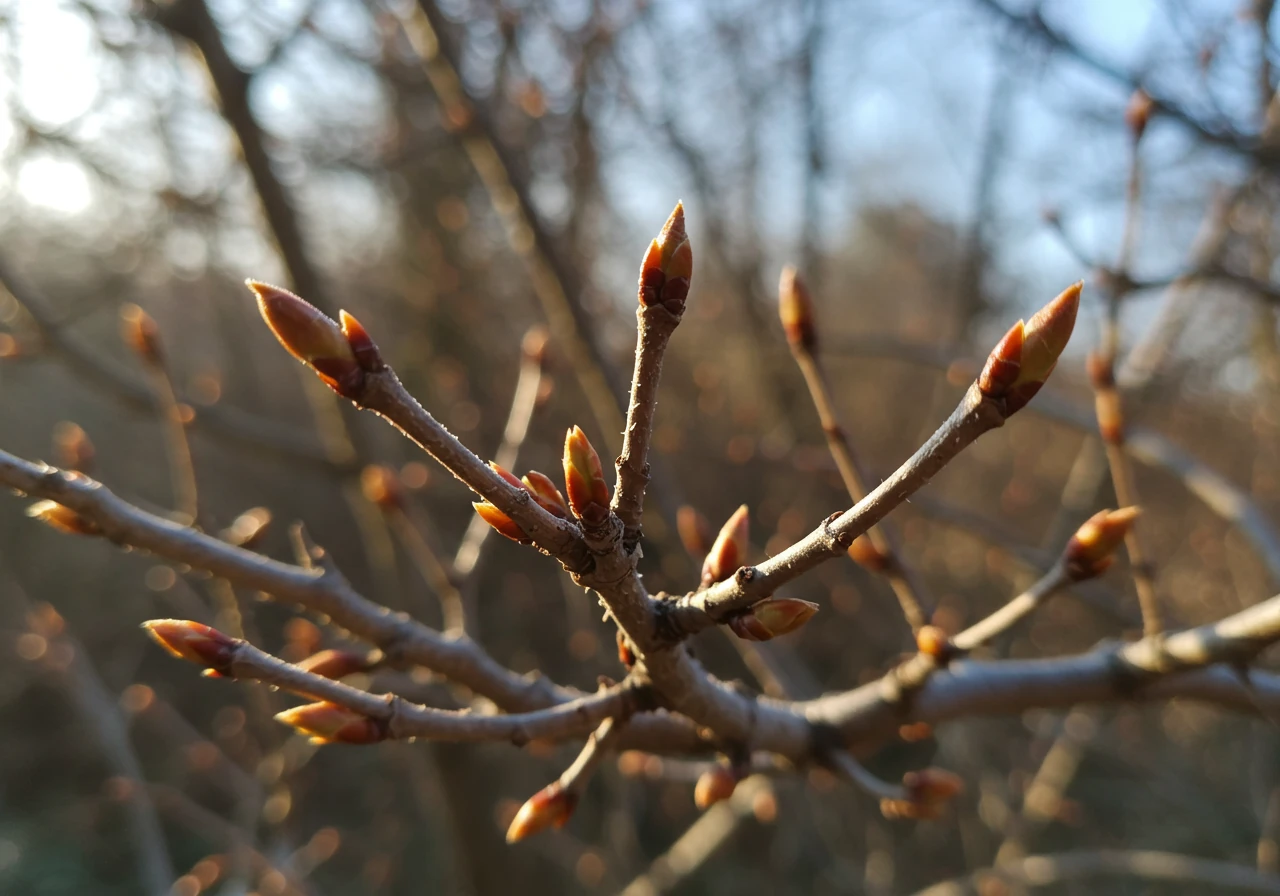
So, you're ready to give your Embrun shrubs a fighting chance against winter! But when exactly should you grab those pruners? Timing, as they say, is everything – especially in gardening. Prune too early, and you might confuse your plant; prune too late, and well, you might be chipping ice off your shears!
The magic window for most pre-winter structural pruning in the Ottawa region opens up in late fall, typically after your shrubs have entered dormancy. Think of dormancy as the plant's deep sleep for the winter. You'll know it's happening when the leaves have dropped (for deciduous shrubs) and active growth has clearly stopped, usually after we've had a few good frosts but before the ground freezes solid and the really harsh winter weather sets in. This sweet spot is often somewhere between late October and early December, depending on the year.
Why is this timing so crucial?
- Pruning Too Early: If you prune while the shrub is still actively growing (say, in late summer or early fall), you risk encouraging a flush of tender new growth. That new growth won't have time to "harden off" before the Embrun winter arrives, making it extremely vulnerable to frost damage. This stresses the plant unnecessarily.
- Pruning Too Late: While some minor tidying can happen mid-winter, major structural pruning is best done before the deep freeze. It’s easier to see the plant structure without snow, and you avoid potential damage from bending frozen branches. Plus, who wants to be gardening when it's -20°C?
Our local Ottawa Valley weather plays a big role. Keep an eye on the forecast! A sudden warm spell after pruning could theoretically trigger growth, though it's less likely once true dormancy sets in. Also, remember microclimates exist. Your timing in Embrun might be slightly different than for someone doing similar plant care near the Rideau River in Osgoode, or in a more exposed spot out towards Metcalfe, where the first hard frosts might arrive a bit sooner or later. It's worth noting these slight variations if you have friends comparing gardening notes across different neighbourhoods, maybe even those using services like the [Metcalfe yard cleanup service](https://cleanyards.ca/metcalf-yard-cleanup-service/).
Actionable Tip: Focus this late-season pruning primarily on removing dead, damaged, or diseased wood, and any branches that are crossing or rubbing. For flowering shrubs that bloom in spring (like lilacs or forsythia), be cautious not to remove too much healthy wood, as you might be cutting off next year's flower buds! Save the heavy shaping of those for after they bloom. While you're tidying the garden, don't forget about other essential tasks – the timing for pruning differs from the schedule for [comprehensive lawn care solutions](https://cleanyards.ca/lawn-care/) like late-season fertilizing.
Creating a simple visual calendar or garden journal can be super helpful. Jot down when the leaves fully drop, the dates of the first few hard frosts, and when you pruned. Over time, you'll develop a personalized gardening calendar perfectly suited to your Embrun yard! For local gardening timelines and advice, check resources like the Master Gardeners of Ottawa-Carleton.
Feeling overwhelmed by the timing or the task itself? Remember, professional help is available. Many comprehensive [landscaping and yard maintenance services](https://cleanyards.ca/services/) include seasonal pruning. Whether you need an [expert garden clean up service in Embrun](https://cleanyards.ca/embrun-garden-clean-up-service/) specifically, or similar help like a [reliable yard cleanup service in Metcalfe](https://cleanyards.ca/metcalf-yard-cleanup-service/), getting assistance ensures the job is done right, at the right time. Across the wider area, many homeowners rely on [professional Ottawa yard cleanup services](https://cleanyards.ca/ottawa-yard-cleanup-service/) to prepare their landscapes for winter.
Know Your Neighbours: Common Embrun Shrubs & Their Winter Needs
Okay, let's chat about the leafy neighbours that grace our Embrun yards! Just like people, our shrubs have different personalities and needs, especially when Old Man Winter comes knocking. Driving around Embrun, or over into nearby Russell or even out towards Barrhaven, you see a lovely variety of hardy shrubs that homeowners favour in their landscaping. But knowing which shrub you have is key to giving it the right winter plant care.
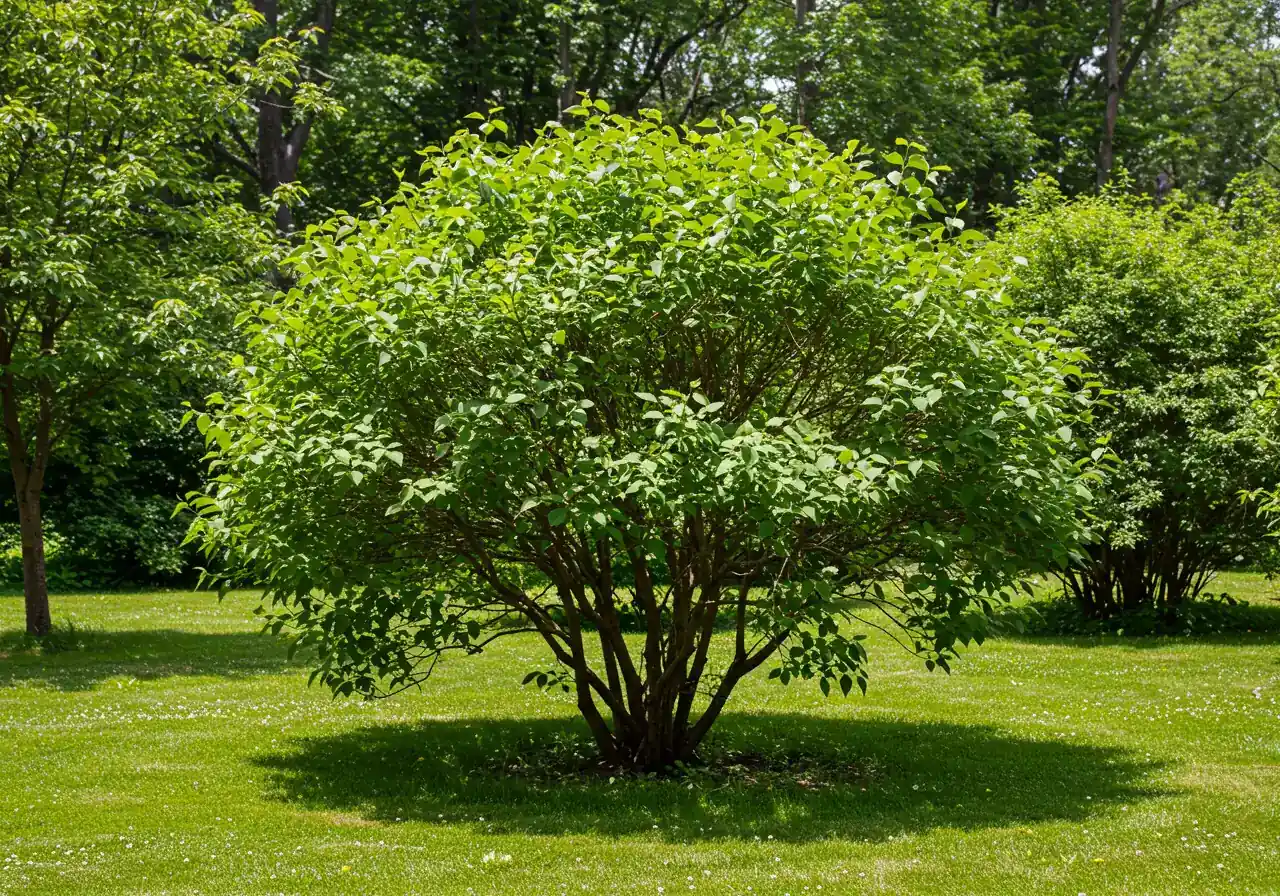
The biggest head-scratcher often comes down to pruning and knowing when to do it based on how the shrub flowers. Think of it like this: some shrubs are planners, setting their flower buds way back in the summer or fall on old wood (last year's branches). Others are more spontaneous, flowering on fresh new wood grown in the current spring/summer season. Messing up the timing can mean accidentally giving your shrub a flower-free year – oops!
The Early Birds (Bloom on Old Wood)
Examples: Classic Lilacs, Forsythia, Weigela, some early Spireas.
Characteristics: These shrubs set their flower buds during the previous growing season (summer/fall) on branches that grew last year ('old wood').
Winter Tip: Limit late fall/winter pruning strictly to removing the 3 D's: dead, damaged, or diseased branches. Avoid cutting back healthy stems significantly, as you'll remove next spring's flowers. Major shaping or size reduction should happen *immediately after* they finish blooming in spring.
The Summer Show-offs (Bloom on New Wood)
Examples: Panicle Hydrangeas (e.g., 'Limelight', 'Pinky Winky'), Smooth Hydrangeas ('Annabelle'), Potentilla, most summer-blooming Spireas (e.g., 'Goldflame', 'Anthony Waterer'), Butterfly Bush.
Characteristics: These produce flowers on the growth they make in the *current* spring and summer season ('new wood').
Winter Tip: These are generally more forgiving of late winter/early spring pruning* (before new growth starts). You can often cut them back more significantly to encourage strong new stems and abundant blooms. Removing weak stems now also helps prevent snow damage. This approach contributes to the overall health needed for those [stunning landscape transformations](https://cleanyards.ca/transformations/) we all admire.
The Evergreens (Year-Round Presence)
Examples: Cedars (Arborvitae), Junipers, Yews, Boxwood, Rhododendrons (if hardy).
Characteristics: Maintain foliage year-round. Primary winter concerns are snow load, windburn, and sun scald (especially for broadleaf types).
Winter Tip: Focus on protection. Gently brush off heavy snow loads from upright varieties to prevent branch breakage or splaying. Consider loosely tying upright cedars or junipers with soft twine. Broadleaf evergreens in exposed sites may benefit from burlap screens or wraps to reduce winter damage. Ensure they are well-watered before the ground freezes. Keeping the whole yard tidy with a [holistic property clean up](https://cleanyards.ca/property-clean-up/) before snow flies reduces hiding spots for pests that might nibble on evergreens over winter.
Beyond Pruning: Don't forget about salt! If your shrubs are near driveways or walkways where de-icing salt is used, consider creating a barrier (like burlap) or using salt alternatives to protect them from damaging spray.
Understanding these differences is a huge part of successful gardening. It can be helpful to create a little cheat sheet or table comparing your specific shrubs and their needs – a task that dedicated homeowners, perhaps like those using a [Metcalfe garden clean up service](https://cleanyards.ca/metcalf-garden-clean-up-service/) for seasonal prep, might find useful. Remember, good plant care now pays off beautifully in the spring. While we focus on shrubs here, don't neglect your turf; integrating [proper lawn care techniques](https://cleanyards.ca/lawn-care/) ensures the whole picture looks great.
Feeling unsure about identifying your shrubs or tackling the pruning? No worries! You can always consult resources or consider professional help. Managing your booked services is easy too, often available through a [convenient customer portal](https://cleanyards.ca/customer-portal/) if you work with a local company like Clean Yards (check us out on Google!). Happy winter prepping!
Mastering the Cut: Specialized Techniques for Healthy Shrubs
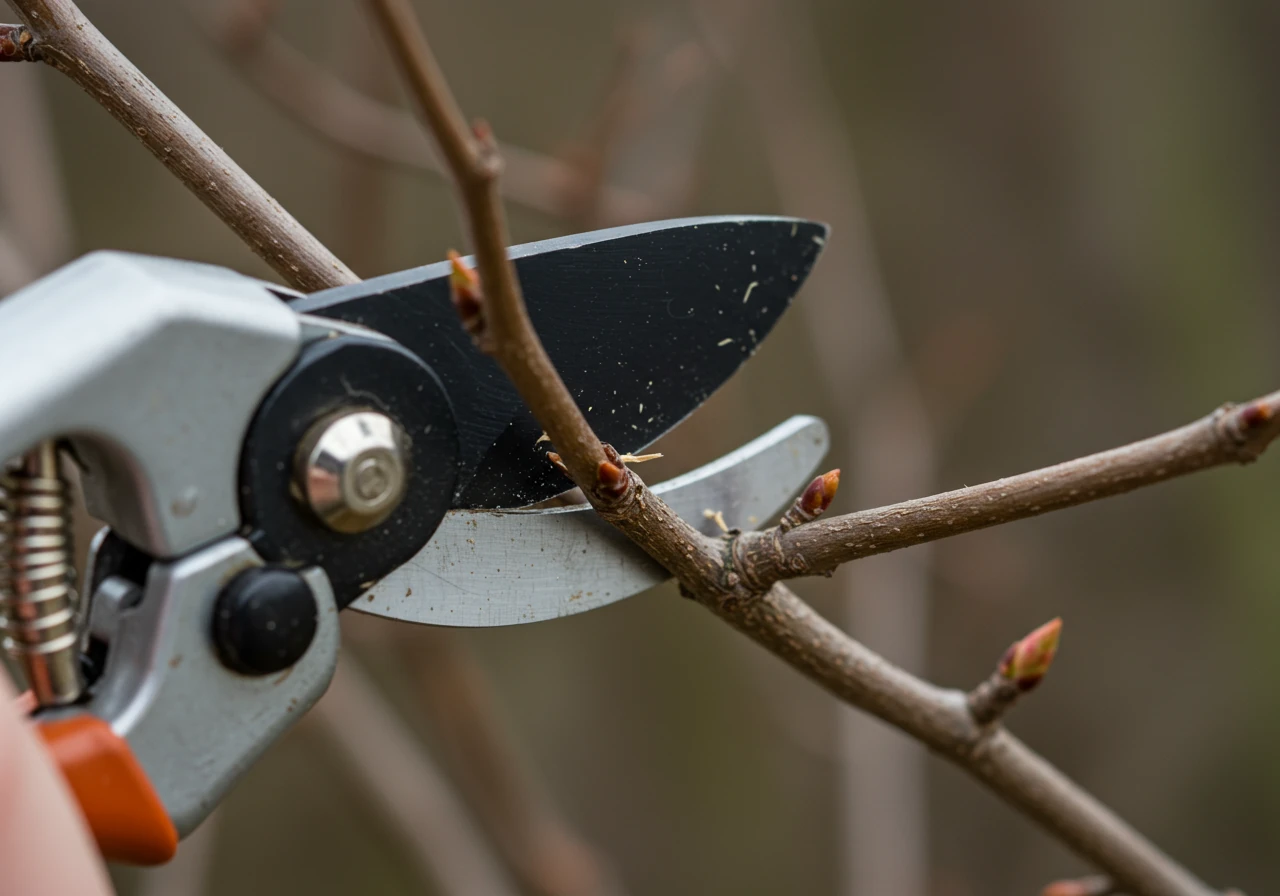
Alright, you know why and when to prune your shrubs for winter, and you've got a handle on the specific needs of your leafy pals in Embrun. Now, let's grab those tools (the sharp ones!) and talk technique. Mastering the cut isn't about giving your shrubs a buzz cut; it's more like a strategic trim to keep them healthy and strong through whatever an Ottawa winter throws at them, whether you're in Richmond, Winchester, or right here. Think of it as less of a drastic haircut and more of a smart, targeted tidy-up for better plant care.
Here are the key moves for successful winter prep pruning:
- The Three D's: Dead, Damaged, and Diseased Wood: This is your top priority! Get in there and carefully cut out any branches that fit this description. Why? Dead wood is useless, damaged branches are weak points waiting to snap under snow, and diseased bits can spread. Removing them cleans things up and helps the shrub focus energy on healthy parts. It's fundamental gardening hygiene!
- Thinning Cuts: This means removing entire branches right back to where they join a larger branch or the main stem. Don't just snip the ends off! The goal here is to open up the shrub's structure. Better airflow discourages disease, and more light can reach the interior. It also reduces the overall density, making the shrub less likely to act like a giant snow-catcher. Good thinning is crucial for long-term health and contributes to those impressive [visual landscape transformations](https://cleanyards.ca/transformations/) we all admire.
- Minimal Heading Back: Heading back means shortening the length of a branch. For winter prep, use this technique very sparingly, if at all. Cutting branch tips can sometimes encourage weak, late-season growth that won't survive the frost. Focus on structure (thinning) rather than major size reduction at this time of year. Save the serious shaping for the right season (often spring or after flowering).
Making the Perfect Cut (Imagine This!):
Ready for a close-up? When removing a branch, look for the 'branch collar' – that slightly swollen, wrinkly area where the branch meets the bigger stem or trunk.
- Position your sharp pruners or saw just outside this collar.
- Angle the cut slightly downwards, away from the main stem, so water runs off.
- Make a clean, decisive cut.
Avoid These: Don't leave a long stub sticking out (ugly and invites trouble!), and don't cut flush against the trunk, removing the collar (this damages the shrub's natural healing ability). Precision beats hacking any day!
Tool Time and Keeping it Clean:
Use the right tool for the job: sharp bypass pruners for small stems, loppers for branches up to an inch or so, and a clean, sharp pruning saw for anything larger. Sharpness is key for clean cuts that heal quickly. And hygiene matters! Wipe your blades with rubbing alcohol or a diluted bleach solution between shrubs, especially if you suspect any disease. It’s a simple step professionals always take, reflecting the kind of quality standards you can learn more about by checking out our [company information page](https://cleanyards.ca/about-us/). Proper tools make any landscaping task easier.
Oops! Common Mistakes:
Home gardeners sometimes get a little too enthusiastic or might be unsure about the best approach. Common errors include pruning spring bloomers heavily in fall (goodbye, flowers!), making flush cuts or leaving stubs, using dull tools that crush stems instead of cutting cleanly, or simply removing too much healthy wood at once. Remember, less can be more with late-season pruning.
After you're done pruning, don't forget the cleanup! Raking up the removed branches is important for tidiness and pest prevention. It's often done alongside other final touches like applying [tidy mulching and edging applications](https://cleanyards.ca/mulching-and-edging/) to really make the garden beds look sharp for winter. If the task seems daunting, or you're short on time before the snow flies, remember that help is available. Whether you need a focused service like a [Marionville focused garden clean up](https://cleanyards.ca/marionville-garden-clean-up-service/) or broader assistance through an [Ottawa wide property cleanup service](https://cleanyards.ca/ottawa-property-cleanup-service/) to get your whole yard ready, professional help ensures your shrubs get the expert care they need.
Shrub Winter Damage Reduction (Estimated)
Beyond Pruning: Eco-Friendly Winter Care & Protection
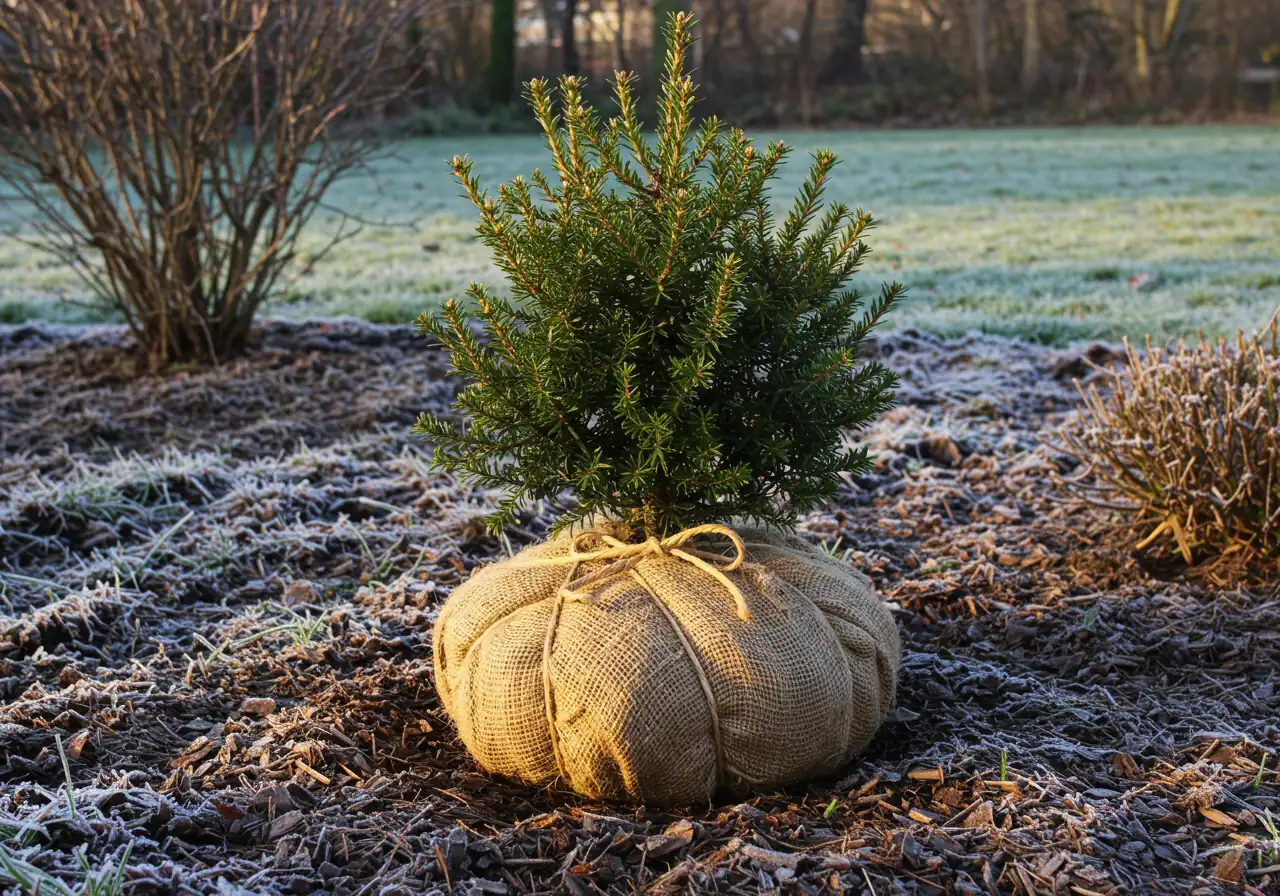
Alright, so you've bravely tackled the pruning – high five! But wait, there's more to helping your shrubs survive (and thrive!) through an Ottawa winter than just snipping branches. Let's talk about some earth-friendly ways to provide winter care and protection that go beyond the cut, keeping your garden happy and healthy without being wasteful.
First off, what do you do with all those pruned bits and fallen leaves? Instead of bagging them for the landfill, think green! Composting this yard waste is fantastic for creating nutrient-rich food for your garden next season. Most municipalities, including Ottawa, have green bin programs perfect for this. If you have a larger volume, services specializing in [handling yard waste in Marionville](https://cleanyards.ca/marionville-property-cleanup-service/) and surrounding areas know exactly how to dispose of it responsibly. Check out options for [Marionville yard cleanup service](https://cleanyards.ca/marionville-yard-cleanup-service/) if you need help.
Next up: hydration! Believe it or not, watering deeply before the ground freezes solid is crucial, especially for evergreens (like cedars and yews). Winter winds can dry them out terribly (a condition called desiccation). Give them a good long drink in late fall so they can store moisture. It’s a simple, water-wise step that prevents stress.
Now, for protection. Some shrubs, particularly broadleaf evergreens or those in very exposed, windy spots (think areas like Kars or Vernon), benefit hugely from a burlap wrap. It acts like a windbreaker and sunscreen, preventing windburn and sun scald on those surprisingly bright winter days. Just wrap loosely – don't mummify them! Another great eco-tip is applying a layer of natural mulch (like shredded bark or wood chips) around the base. This insulates the roots from extreme temperature swings and helps retain that precious moisture. These steps are often part of thorough [ongoing garden maintenance](https://cleanyards.ca/garden-maintenance/) plans.
Thinking long-term sustainability? The most eco-friendly approach starts with choosing the right plants! Opting for shrubs that are native to the Ottawa region or known to be exceptionally hardy in our Zone 5 climate means less fuss, less watering, less protection needed, and ultimately, less waste. They’re naturally suited to our winters! Choosing climate-appropriate plants is a core principle for responsible landscaping, something the team values – you can [learn more about our team](https://cleanyards.ca/about-us/) and our approach. The Rideau Valley Conservation Authority offers great resources on native plants.
Putting it all together – composting debris, watering wisely, using natural protection like mulch and burlap, and choosing hardy plants – creates a resilient, beautiful, and eco-conscious landscape. If handling all the prep feels like too much, remember that a comprehensive [Ottawa garden clean up](https://cleanyards.ca/ottawa-garden-clean-up-service/) can take care of these tasks for you, ensuring your shrubs are tucked in properly for winter. We always appreciate hearing about your experience, so feel free to [share your thoughts on our service](https://cleanyards.ca/estimate-feedback/) if we've helped you out! After a successful season, perhaps you'll even get a thank you note for your feedback.
Timeline: Key Winter Shrub Prep Steps
Early Fall (Sept-Oct)
Assess shrubs, note any damage or disease. Water deeply if conditions are dry, especially evergreens. Consider options like sod installation for lawn areas before the ground gets too cold.
Late Fall (Late Oct - Nov)
Wait for dormancy (leaves drop). Perform structural pruning: remove dead, damaged, diseased wood. Make thinning cuts. Avoid heavy pruning on spring bloomers. Review your lawn care plan for final steps.
Before Deep Freeze (Nov - Early Dec)
Apply protective mulch around base. Water evergreens one last time before ground freeze. Install burlap wraps or screens on sensitive/exposed shrubs. Finalize Embrun garden clean up tasks.
Mid-Winter (Dec - Feb)
Gently brush heavy snow off vulnerable branches if accessible. Monitor for rodent damage. Plan for spring, maybe even a new garden installation.
Late Winter (Feb - Mar)
Prune summer-blooming shrubs (those blooming on new wood) before new growth starts. Check for winter damage needing repair. Contact services like Metcalfe property cleanup if needed for larger debris.
Highlight Box: Your Quick Winter Pruning Cheat Sheet
Feeling a bit overwhelmed by all the winter shrub advice? Hey, we get it! Keeping track of gardening chores, especially as the Ottawa chill sets in, can feel like juggling snowballs. Whether you're tending your landscaping in Manotick or dealing with the specific challenges of a Nepean yard, here’s a super-quick rundown of the absolute must-knows for winter pruning:
- Timing is Key (Don't Be Too Eager!): Wait until your deciduous shrubs have dropped their leaves and entered dormancy. This usually happens in late fall (think late October to early December) before the ground freezes solid. Pruning too early stresses the plant. Pruning in the deep freeze? Brrr, no thanks for you or the shrub!
- Focus on the 3 Ds: Your main mission right now? Removing Dead, Damaged, and Diseased wood. Snip these branches right back to healthy wood or their point of origin. This prevents breaks under snow load and stops problems from spreading. Think of it as essential winter care first aid.
- Know Your Bloom Time: Remember those spring stunners like Lilacs? They bloom on last year's wood ('old wood'). Go easy on them now – only remove the 3 Ds. Save major shaping for *after* they flower. For summer bloomers (like many Hydrangeas or Spireas) that flower on new wood, you have more flexibility for structural pruning in late winter/early spring to encourage vigorous growth, which is great if you're dreaming of next year's additions from a [professional garden installation service](https://cleanyards.ca/garden-install/).
- Clean Cuts & Clean Up: Use sharp, clean tools! Make cuts just outside the branch collar – no stubs, no flush cuts. And don't leave the mess behind! Proper disposal of clippings is important. If you've got a big pile, remember services like a [dedicated Marionville yard cleanup service](https://cleanyards.ca/marionville-yard-cleanup-service/) or broader [Ottawa garden clean up services](https://cleanyards.ca/ottawa-garden-clean-up-service/) can handle the yard waste efficiently.
Got more questions or feeling unsure about tackling the pruning yourself? No problem at all! You can always reach out for expert advice – just [get in touch with us](https://cleanyards.ca/contact-us/) and we'll be happy to help your Ottawa shrubs face winter with confidence!
FAQ: Your Embrun & Ottawa Winter Pruning Questions Answered
Got questions about wrestling your shrubs into shape before the Embrun winter really hits? You're not alone! It can feel a bit confusing, especially with our unique Ottawa Valley weather. Here are some common questions we hear, answered simply.
Ideally, finish structural pruning before the ground freezes solid and heavy snow sticks around, usually by early December here. While snipping off a snow-broken branch mid-winter is okay, major work on frozen wood is risky and just plain cold! Focus late fall pruning on removing dead or damaged limbs before the worst weather arrives.
The pruning itself doesn't, but repeatedly walking on wet, thawing ground can cause compaction. Try to prune when the ground is firm or frozen. Minimizing soil compaction is crucial for root health. Remember, healthy roots start with healthy soil – understanding [soil preparation methods](https://cleanyards.ca/soil-preparation/) is key for successful gardening anywhere, including clay-heavy spots.
A big one is giving spring-flowering shrubs (like Lilacs) a major chop in the fall, removing next year's blooms! Another is ignoring weak or crossing branches that then snap under snow. Forgetting salt protection for roadside shrubs is also common. Taking a moment for proper plant care avoids these springtime regrets.
For evergreens like cedars and junipers, typically found in Barrhaven landscaping, late fall/winter isn't the time for heavy pruning. Focus on removing only dead or broken bits. Gently brush off heavy snow to prevent branch splaying or breaking. If choosing new evergreens, prioritize hardiness; resources on [selecting the right landscape materials](https://cleanyards.ca/material-selection/) can guide you towards winter-tough options.
If heavy snow or ice causes large broken branches, splits the main trunk, or severely damages the shrub's structure, it’s wise to call professionals. Assessing significant damage and safely removing large, broken limbs requires expertise and the right equipment. You can easily [request a free estimate online](https://cleanyards.ca/book-estimate/) for expert assessment and careful repair work.
We definitely understand the importance of privacy! When you share details for an estimate, we use that information strictly to understand your landscaping needs and contact you about the services requested. Your data is kept secure and handled according to our clear [data protection and privacy policy](https://cleanyards.ca/privacy-policy/). We also adhere to our terms and conditions.
Conclusion: Tuck Your Embrun Shrubs in for a Long Winter's Nap
Okay, let's wrap this up! Think of all this winter prep as lovingly tucking your Embrun shrubs into bed for their long nap. It might seem like just another gardening chore, but a little strategic pruning and protection now makes a huge difference come spring. It helps prevent broken branches from heavy snow (a classic Ottawa problem!) and sets your landscaping up for healthy, happy growth when the warmer weather finally returns. From Embrun over to Manotick, giving your shrubs this proper winter preparation is key plant care for surviving our chilly season without looking like they wrestled a snowplow and lost.
Feeling like your pruning shears deserve their own winter hibernation? If tackling the pre-winter shrub care feels like too much, don't sweat it! Our team offers expert shrub pruning and winter preparation services right here in Embrun, as well as Russell, Greely, Metcalfe, and surrounding Ottawa communities. Let us handle the cold work, so you can enjoy the cozy indoors!
Ready to explore other ways to keep your yard looking its best year-round? Check out our full range of [landscaping and yard maintenance services](https://cleanyards.ca/services/) for every season.
Book Your Winter Prep Service Today!